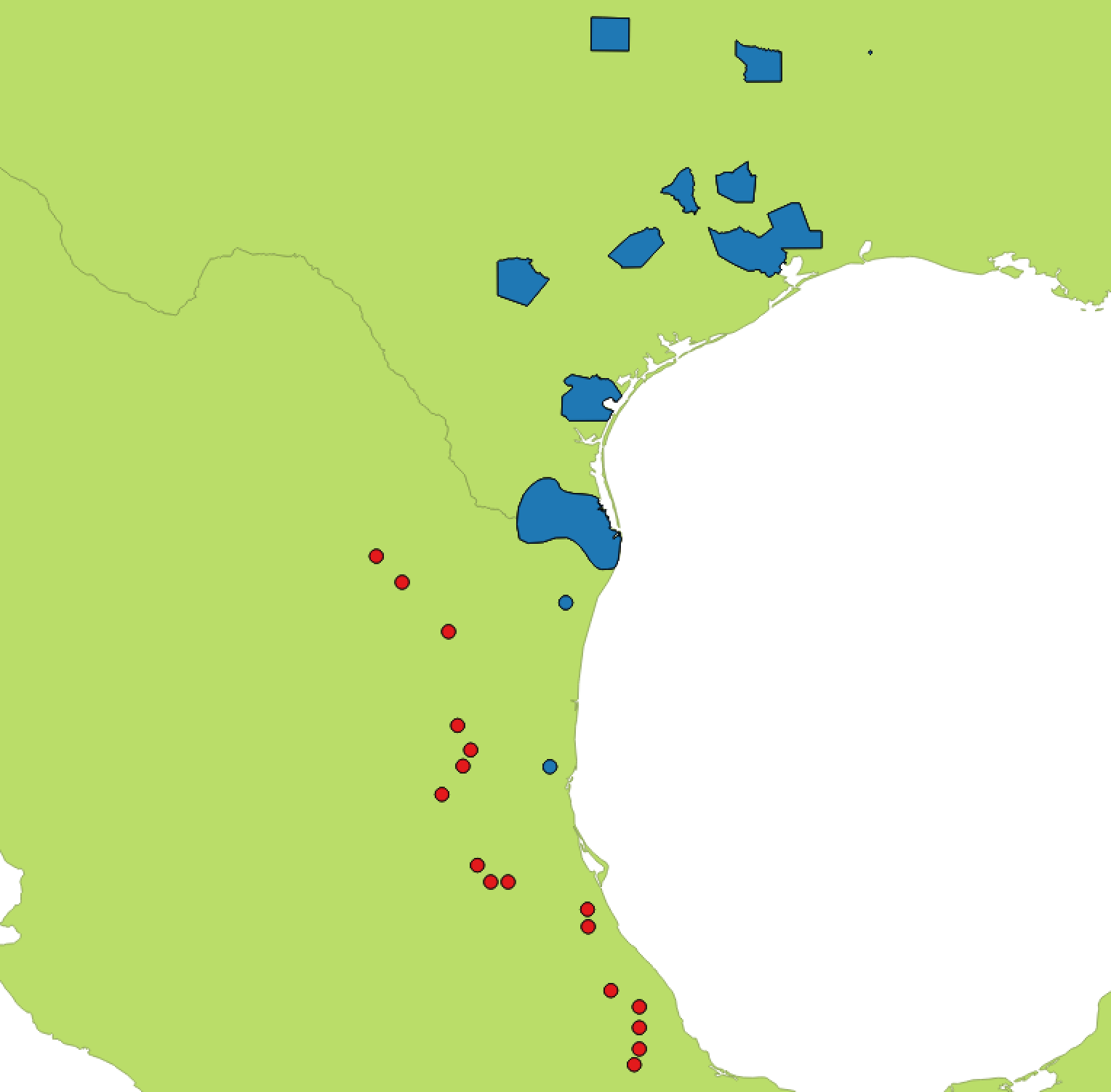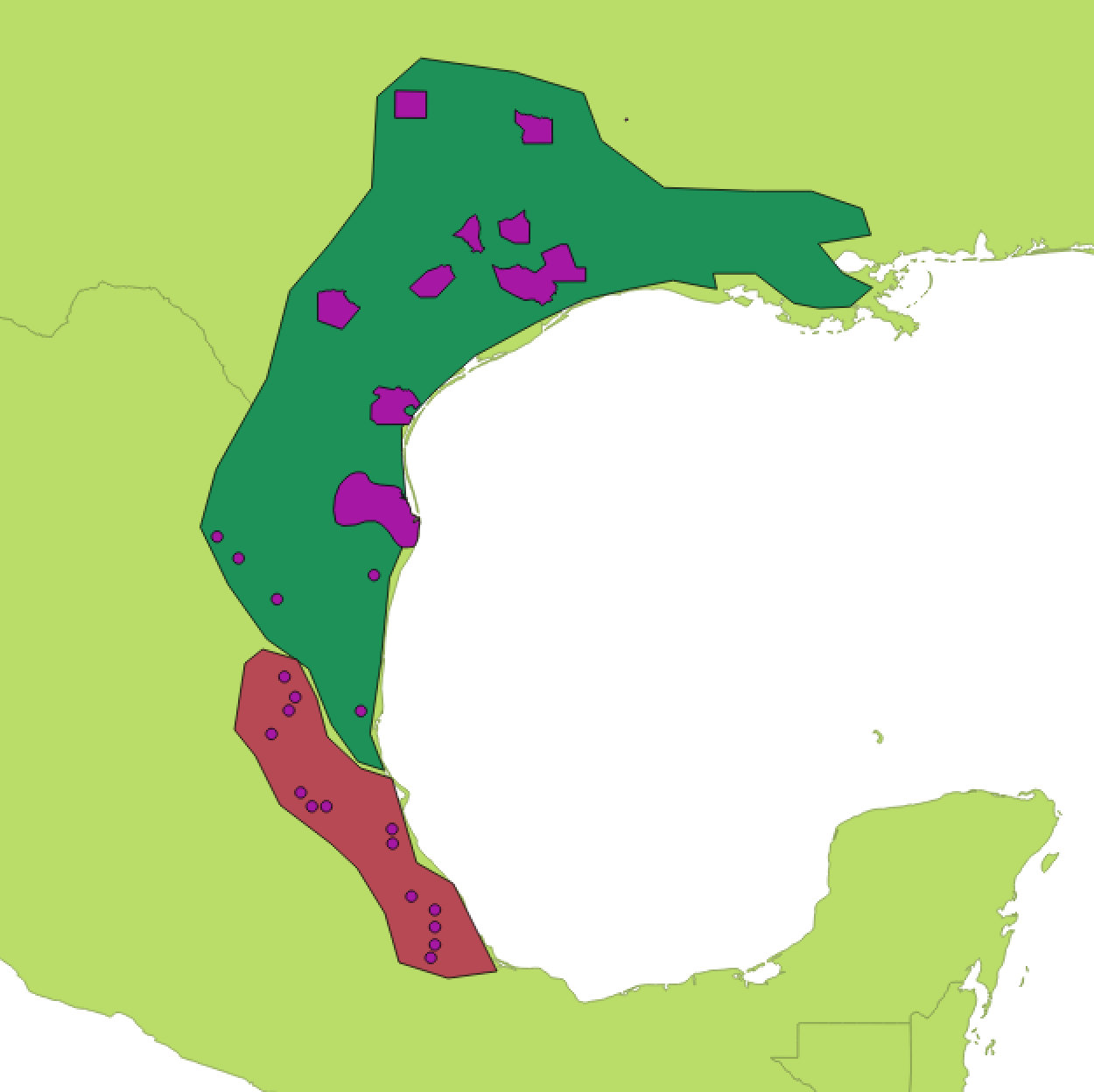Flag for Taxon: Lowland Chirping Frog (Eleutherodactylus cystignathoides)
| Flagger | Content Author | Content | Reason | Flag Created | Resolved by | Resolution |
|---|---|---|---|---|---|---|
| loarie | Lowland Chirping Frog (Eleutherodactylus cystignathoides) |
elevate campi to species status? |
Oct. 26, 2020 22:02:09 +0000 | loarie |
see comments |
Comments
We can, but I think we need to look at the geographic boundary between cystignathoides and campi in eastern Mexico so we know where to draw the lines between the two species. The Gruenwald paper doesn't offer any resolution of this. I guess we could make maps that overlap in the area of uncertainty?
@sonoran whats a reasonable place to draw the line between Eleutherodactylus cystignathoides (sensu stricto) and Eleutherodactylus campi on the IUCN range? https://www.iucnredlist.org/species/56547/11495468
Appreciate you sharing your expertise
So what is currently considered a "cystignathoides" is actually a composite of three species. The next Grunwald paper will shed more light on this as will the chapter in the upcoming book on Reptiles and Amphibians of Mexico. The reality is, Eleutherodactylus campi was never properly sunk, so considering it invalid was never properly justified. The actual cystignathoides are in coastal northern Veracruz, Hidalgo, Puebla south to approximately Cordoba and north to approximately Altamira. The actual campi are lowland and foothills of Nuevo León and lowland Tamaulipas and S. Texas. What is going on in the rest of Texas I don't know... nor do I have the total picture on where those two species "meet". The third species is from highland Tamaulipas, San Luis Potosi and Hidalgo. There is no name associated with this species yet, and it will have to hang out on naturalist as cystignathoides for now.
Thanks @sonoran. Will this work for E. campi (blue) and "E. cystignathoides + unnammed species" (red)? I just sliced the IUCN range following your instructions. It doesn't have to be perfect, just a guide to help people understand what is meant by the names we're using

That looks like a good split of the species. The US range of campi is much wider than what IUCN shows though (much more of Texas and into LA). Our atlas is a better representation. We will need a new common name for cystignathoides. Does Eastern Chirping Frog make sense or does it make more sense to wait for the split of the southern species?
The altamira / tampico population was originally thought to be intergrades, and had a lot to do with the two taxa being synonymized in the first place. They are a weird population, and I don’t have DNA from their. My hunch is that they may be the “high elevation” species or just cystignathoides. I don’t think they look like Campi.
@sonoran - so you are are saying the ones in NL and TAMPS are campi and the new species is the one in eastern SLP (the Cd. Valles area) and west of there? Do we know the western boundaries of that population?
I'm wondering about the record from the up in mountains SE of Monterrey (https://www.inaturalist.org/observations/35641083) and the one from in the mts SE of Cd. Victoria (https://www.inaturalist.org/observations/45222390). Are those also campi?
Thanks @sonoran - is this better as a coarse range map - mainly just for reassigning observations post split and giving a general sense for where they occur?

Yes... much better. Again, all the US stuff as far as I know noone has run genes on, and certainly noone has compared to the different Mexican populations. I suspect that potentially both species are being introduced around the US at this point. But yeah, until proven otherwise... it would be best to assign them to campi. Also, note I have commented campi on several specimens from N. Mexico that looked like campi to me. I will continue to curate on those as I see them.
Cheers,
Chris
OK split https://www.inaturalist.org/taxon_changes/84401 lots of obs involved so may take a while - thanks sonoran and sandboa!
Are we calling the ones from around Cd. Valles campi? I thought @sonoran implied they were going to be something else?
Is that in the new pending publication?
@sandboa Tocayo: I am not ready to call the species boundaries that detailed yet... WEST of Cd. Valles, in the hills around Tamasopo, etc... is the new species. Valles itself and to the east is probably campi... but I haven't run DNA from that area. Anything south of Valles pretty quickly will be cystignathoides. The species probably divide the habitat based on moisture. Actually I think Coniophanes in that area do the same shit. For common names... I have no idea. But Rio Grande Chirping Frog should definitely go with campi. Lowland Chirping Frog could work for cystignathoides... although they aren't always lowland and certainly not lower than campi.





ASW elevated ssp campi (the US populations) to species status - anyone opposed to us following suit? Thoughts @sandboa?